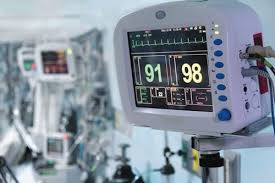Introduction
Electromagnetic Compatibility (EMC) testing medical devices is an essential part of the regulatory process. In today’s healthcare environment, where numerous electronic devices operate simultaneously, ensuring that a medical device can function without causing or experiencing electromagnetic interference (EMI) is crucial. EMC testing guarantees that the device is safe, effective, and compliant with international standards.
What is Electromagnetic Compatibility (EMC)?
Electromagnetic Compatibility (EMC) refers to a device’s ability to operate properly in its electromagnetic environment without introducing unacceptable electromagnetic disturbances to other devices.
Key Aspects of EMC:
- Emission: Limiting the electromagnetic energy the device emits.
- Immunity: Ensuring the device can tolerate external electromagnetic energy without malfunctioning.
Why EMC Testing is Crucial for Medical Devices
1. Patient Safety
Malfunction due to EMI can lead to incorrect diagnoses or treatments, potentially endangering lives.
2. Device Performance
A device must maintain its function and accuracy even in the presence of electromagnetic noise.
3. Regulatory Compliance
Agencies like the FDA, EU MDR, and Health Canada require EMC testing as part of product approvals.
Regulatory Requirements and Standards
Medical devices must adhere to specific EMC standards depending on the region and type of device.
Key Standards:
- IEC 60601-1-2: The primary standard for EMC in medical electrical equipment.
- ISO 14971: Addresses risk management, including risks from electromagnetic interference.
- FCC Part 15: Required for devices sold in the United States.
- CISPR 11: Applies to industrial, scientific, and medical equipment.
Devices That Require EMC Testing
Almost all electrical medical devices require EMC testing, including:
- ECG machines
- MRI equipment
- Infusion pumps
- Ventilators
- Wearable health monitors
- Pacemakers and implantable devices
Types of EMC Tests for Medical Devices
1. Emissions Testing
Measures how much electromagnetic energy the device emits.
- Radiated Emissions
- Conducted Emissions
2. Immunity Testing
Evaluates how the device handles external EMI.
- Electrostatic Discharge (ESD) Immunity
- Radiated RF Immunity
- Conducted RF Immunity
- Power Frequency Magnetic Fields
- Electrical Fast Transients (EFT)
EMC Testing Process
Step-by-Step Overview:
- Pre-Compliance Testing
- Conducted during development to identify design issues early.
- Test Plan Development
- Define applicable standards, test levels, and test setup.
- Laboratory Testing
- Conducted in an accredited EMC test lab with specialized equipment.
- Documentation
- Test reports, risk assessments, and mitigation strategies compiled for submission.
- Certification and Approval
- Submitted to regulatory bodies for device approval.
EMC Design Considerations for Medical Devices
To pass EMC testing, thoughtful design is key. Consider:
- Shielding: Use of conductive enclosures or coatings.
- Filtering: EMI filters on power and signal lines.
- PCB Layout Optimization: Short return paths, ground planes, and proper routing.
- Cable Management: Shielded cables and proper grounding.
Common Challenges in EMC Testing
- Failing Immunity Tests: Devices malfunction under exposure to EMI.
- Inadequate Shielding: Resulting in high emissions.
- Complex Testing for Wireless Devices: Including Bluetooth, Wi-Fi, or RF telemetry.
Costs and Timeframe
- Time: Full EMC testing can take 1 to 4 weeks depending on complexity.
- Cost: Ranges from $5,000 to $25,000+ depending on the number of tests and device class.
Benefits of EMC Compliance
- Faster Regulatory Approvals
- Improved Product Reliability
- Increased Market Access
- Reduced Risk of Product Recalls
- Enhanced Patient Trust and Safety
EMC Testing Labs: What to Look For
Choose a lab that is:
- ISO/IEC 17025 Accredited
- Familiar with IEC 60601-1-2 and medical device regulations
- Provides pre-compliance support and documentation services
EMC Testing for Wireless Medical Devices
With the rise of IoT and telehealth, many medical devices incorporate wireless technologies. These devices must undergo additional testing such as:
- RF Exposure (SAR)
- Wireless Coexistence Testing
- Bluetooth and Wi-Fi Interference
Future Trends in EMC for Medical Devices
- Increasing complexity of multi-function devices
- Stricter standards for home healthcare devices
- Integration with AI and IoT requiring more robust EMC strategies
- Cybersecurity concerns tied to wireless EMI vulnerabilities
Conclusion
EMC testing for medical devices is not just a regulatory requirement—it is a fundamental step in safeguarding patient health and ensuring reliable device performance. By integrating EMC considerations early in design and working with experienced labs, manufacturers can streamline compliance, avoid costly delays, and deliver safer, more dependable products to the market.
FAQs
Q: When should EMC testing be performed during product development?
A: Ideally, pre-compliance testing should be done during the design phase, with full testing before regulatory submission.
Q: What happens if my device fails EMC testing?
A: You’ll need to identify the source of the issue, implement mitigation strategies (e.g., shielding, filtering), and retest.
Q: Are EMC requirements the same in all countries?
A: No. While IEC standards are internationally accepted, regions like the U.S., EU, and Japan have specific additional requirements.
